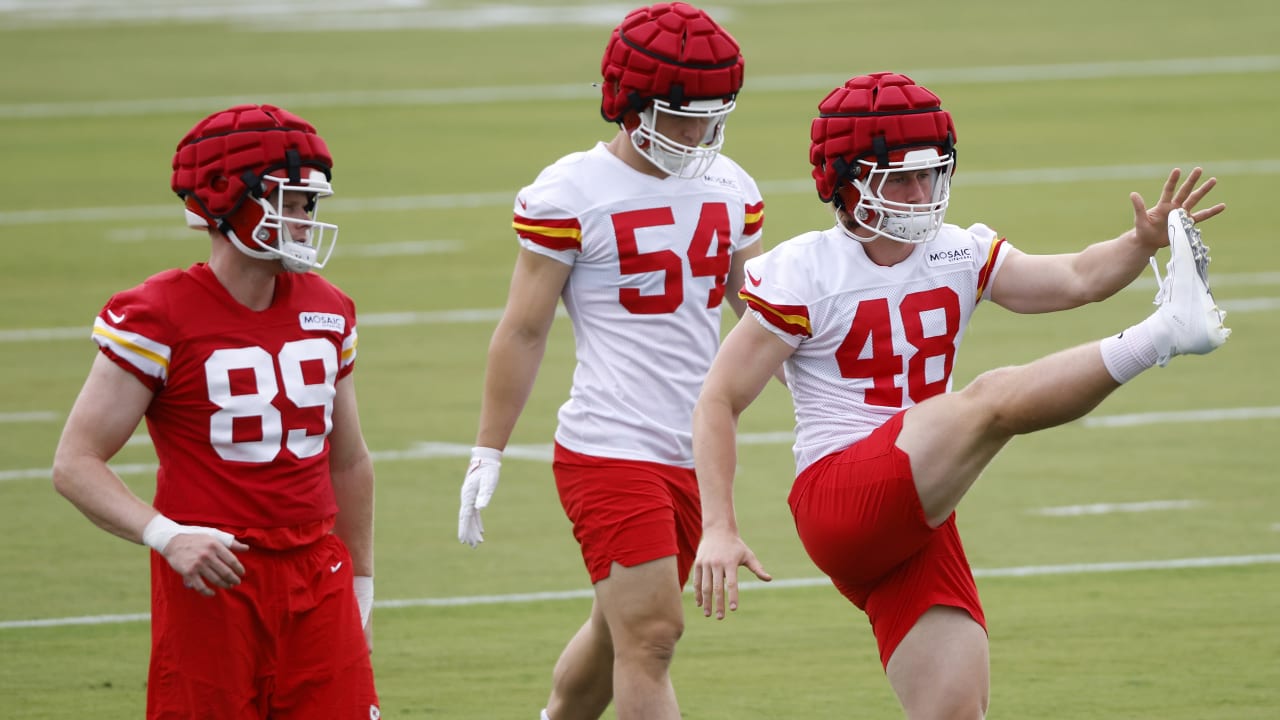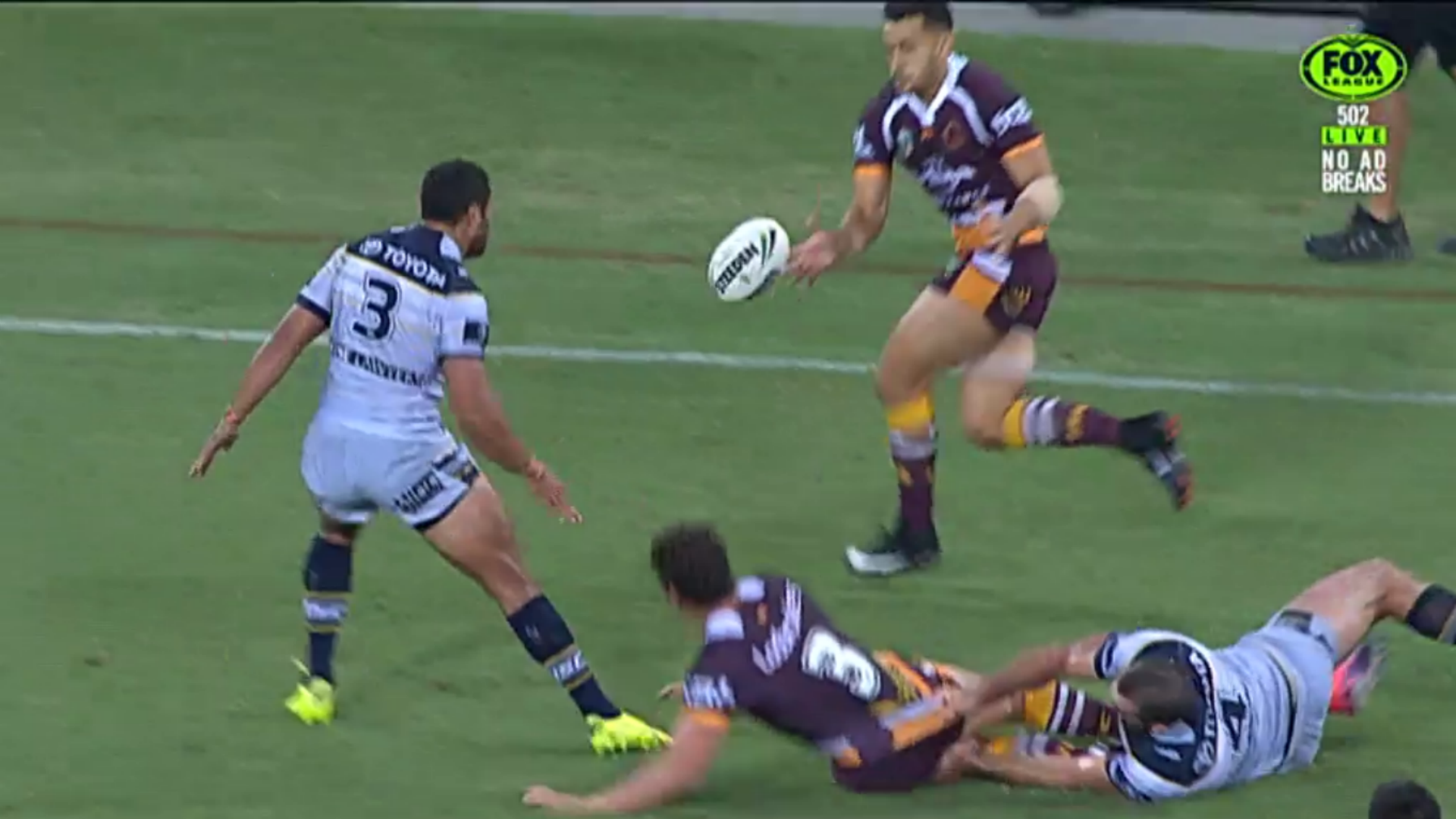Do you know how much money goes into the English Rugby Union? For many years, the English Rugby Union’s finances have been the subject of much debate in a world where sports budgets are often discussed quietly. How does a sport with such rich traditions and a passionate following manage its financial affairs?
The English Rugby Union’s budget, in essence, fuels the country’s rugby ambitions. Every penny counts; from nurturing young talent to organizing high-stakes events, every pound counts in shaping the sport’s future in England. Let’s dig a little deeper into the financial trenches to learn about the budget that keeps Rugby alive.
You’ll learn more about how English rugby’s financial model works as we embark on a journey into the heart of this beloved sport, as well as its passion and dedication, in this edition of Financial Secrets. Come along as we explore the story behind the numbers and look at how the English Rugby Union’s budget shapes the future of the sport.
Historical Perspective
In the captivating realm of English Rugby Union, the historical perspective unveils a rich tapestry of financial evolution that has played a pivotal role in shaping the sport as we know it today. As we embark on this journey through time, we delve deep into the annals of rugby history, where every chapter tells a story of growth, challenges, and triumphs.
Exploring the Evolution: Over the years, the English Rugby Union’s budget has undergone a remarkable metamorphosis. What once began as a modest financial endeavor has transformed into a substantial fiscal powerhouse. From its humble origins, where funds were scarce, to its current standing as a robust financial entity, the evolution is a testament to the enduring appeal of rugby in England.
The budget’s growth is not merely a reflection of financial numbers but a mirror to the passion and dedication of rugby enthusiasts across the nation. It signifies the sport’s journey from the grassroots to the grand stadiums, from local competitions to international glory. The allocation of funds has expanded, mirroring the sport’s increasing popularity and its impact on the national psyche.
Key Milestones and Impactful Events: As we traverse the historical landscape, it becomes evident that key milestones and impactful events have left indelible marks on the English Rugby Union’s budget. The sport’s inclusion in major global tournaments, such as the Rugby World Cup, brought not only prestige but also significant financial opportunities. Sponsorships, broadcasting rights, and merchandise sales skyrocketed, bolstering the budget’s coffers.
The emergence of legendary players and iconic moments in rugby history, like the World Cup victory in 2003, breathed new life into the financial ecosystem. These moments spurred increased investments, with sponsors eager to be associated with a winning team. The budget’s allocation began to reflect the pursuit of excellence, with substantial investments in coaching staff, player development, and state-of-the-art training facilities.
However, it hasn’t always been a smooth journey. Economic downturns, global crises, and the occasional controversies have posed financial challenges. The financial resilience displayed during these trying times is a testament to the English Rugby Union’s commitment to the sport’s sustainability.
Sources of Revenue

In the dynamic landscape of the English Rugby Union’s financial ecosystem, understanding the primary sources of revenue is akin to unraveling the intricate threads of a well-woven tapestry. These sources form the bedrock upon which the sport thrives, shaping its fortunes and underpinning its progress. Let’s embark on a journey to dissect and comprehend the lifeblood of the English Rugby Union’s financial stability.
Ticket Sales: At the heart of the revenue stream lies the sale of tickets, a quintessential element that not only fills the stadiums with fervent fans but also fills the coffers of the Union. Matchdays become a celebration of rugby, where enthusiasts from all walks of life congregate to witness the clash of titans. Whether it’s a Six Nations showdown or a test match against a formidable opponent, ticket sales provide a substantial chunk of revenue. The allure of live rugby action, the electrifying atmosphere, and the sheer thrill of being part of the crowd contribute significantly to the financial viability of the English Rugby Union.
Sponsorships: Another critical pillar sustaining the financial framework is sponsorships. The Union has cultivated lucrative partnerships with corporate giants, each vying for a slice of the rugby pie. These sponsorships extend to various facets of the sport, from jersey branding to stadium naming rights. The symbiotic relationship between the Union and its sponsors not only injects substantial funds but also elevates the sport’s visibility and reach. It’s a testament to the sport’s allure that companies are eager to associate their brands with the fervor and passion of rugby.
Broadcasting Rights: In the digital age, where screens have become the gateway to the world, broadcasting rights emerge as a formidable source of revenue. The English Rugby Union has masterfully negotiated broadcasting deals that bring the sport into the living rooms of millions worldwide. Television networks vie for exclusive rights to broadcast matches, both domestically and internationally, making rugby a global spectacle. These deals provide a steady inflow of funds and amplify the sport’s footprint across continents.
Merchandise: The passionate fan base of rugby translates into a thriving merchandise market. Jerseys, scarves, caps, and a plethora of rugby memorabilia fly off the shelves, adding a significant chunk to the revenue. Fans wear their allegiances with pride, and the merchandise not only serves as a testament to their loyalty but also as a financial boon to the Union. Whether it’s the replica jerseys of the national team or collectibles commemorating historic moments, merchandise sales are a testament to the enduring appeal of rugby.
Hospitality and Corporate Packages: Beyond the conventional revenue sources, the English Rugby Union has tapped into the corporate world with hospitality packages that cater to businesses and individuals seeking an exclusive rugby experience. Corporate suites, VIP packages, and hospitality events during matches provide an additional stream of income. These offerings allow fans to savor rugby in opulent settings while contributing to the Union’s financial prosperity.
In this intricate dance of revenue generation, the English Rugby Union has showcased its ability to adapt and thrive. The synergy between ticket sales, sponsorships, broadcasting rights, merchandise, and corporate partnerships forms a robust financial foundation. It’s a testament to the enduring allure of rugby, a sport that continues to capture the hearts of fans worldwide while simultaneously securing its financial future. As the Union continues to innovate and explore new avenues, its financial stability remains a testament to the enduring legacy of English rugby.
Expenses and Expenditure

Within the intricate financial framework of the English Rugby Union, the allocation of resources, or in more succinct terms, expenses and expenditure, takes center stage. In this captivating fiscal narrative, we delve deep into the financial arteries of the Union, uncovering how the budget is distributed and dissecting the major categories that consume its substantial resources.
Allocation of Resources: The budget of the English Rugby Union is meticulously allocated to various facets of the sport, ensuring that every pound serves a purpose in advancing the sport’s interests. This allocation is a delicate balance, reflecting both the Union’s commitment to excellence and its fiscal responsibility. Here’s a glimpse of where and how the budget finds its home:
-
Player Salaries: At the forefront of the expense ledger are the player salaries, a reflection of the Union’s commitment to nurturing and retaining top-tier talent. From seasoned veterans to emerging stars, these athletes are the embodiment of the sport’s spirit. Their salaries not only reward their dedication but also attract world-class players, ensuring that English rugby remains competitive on the global stage.
-
Coaching Staff: Behind every successful team is a dedicated coaching staff. The Union invests significantly in hiring and retaining top-tier coaches who not only shape the team’s strategy but also mentor and develop emerging talents. Coaching salaries, training facilities, and support staff are all part of this category, aiming to bring out the best in England’s rugby stars.
-
Facilities: The provision of state-of-the-art training facilities and stadiums is integral to the Union’s budget. These venues are more than just arenas for matches; they are the sanctuaries where players hone their skills, where dreams are forged into reality. Maintaining and upgrading these facilities is a significant expenditure, ensuring that England’s rugby infrastructure remains world-class.
-
Administrative Costs: Behind the scenes, a team of dedicated administrators, managers, and support staff work tirelessly to ensure the smooth functioning of the Union. Administrative costs encompass salaries, operational expenses, and the infrastructure necessary to manage the various facets of the sport. This category ensures that the Union operates efficiently, from organizing fixtures to managing sponsorships and broadcasting deals.
-
Youth Development: Fostering the next generation of rugby stars is a priority for the English Rugby Union. Investments in youth development programs, academies, and grassroots initiatives are essential expenses. These initiatives not only feed the talent pipeline but also imbue the sport with a sense of continuity and sustainability.
Striking the Balance: The challenge lies in striking a balance between these major expense categories. The Union must ensure that it invests in player development while maintaining financial prudence. It must provide world-class facilities while keeping an eye on the bottom line. The commitment to excellence must be unwavering, but fiscal responsibility cannot be compromised. It’s a high-stakes juggling act, and the success of English rugby hinges on getting this allocation right.
In this journey through the financial intricacies of the English Rugby Union, we witness a tapestry woven with passion, precision, and purpose. The allocation of resources is not merely a financial exercise; it’s a reflection of the Union’s dedication to nurturing talent, providing top-notch infrastructure, and ensuring the long-term sustainability of the sport. As the Union continues to navigate the challenges and opportunities of the modern sporting landscape, its financial decisions remain pivotal in shaping the future of English rugby.
Budget Allocation and Priorities
In the intricate web of financial management within the English Rugby Union, the allocation of the budget is a strategic endeavor that plays a pivotal role in the sport’s success and sustainability. To understand how the Union prioritizes its budget allocation is to uncover the roadmap that guides the financial decisions of one of England’s most cherished sporting institutions.
Strategic Allocation: The English Rugby Union approaches budget allocation with a meticulous and strategic mindset. Each financial decision is driven by a commitment to enhancing the sport’s competitiveness, fostering its growth, and securing its long-term future. Here’s a breakdown of how the budget allocation process unfolds:
-
Player Development: At the heart of the Union’s priorities lies the nurturing of rugby talent. A significant portion of the budget is strategically allocated to player development programs, academies, and coaching staff. This investment ensures a continuous influx of skilled players into the national team and keeps England competitive on the international stage.
-
Elite Coaching and Training Facilities: To maintain a winning edge, the Union directs substantial funds towards elite coaching and state-of-the-art training facilities. Top-tier coaches are sought after and retained to mentor and refine the skills of players. Cutting-edge training centers equipped with the latest technology are essential for honing the physical and mental prowess of England’s rugby stars.
-
International Competitions: The prestige of international competitions like the Six Nations and Rugby World Cup demands a significant budget allocation. Expenses related to participation, logistics, and preparation for these tournaments are carefully managed to ensure England’s representation at the highest level.
-
Community and Grassroots Initiatives: The Union is keenly aware of the importance of nurturing the sport at the grassroots level. Investments in community programs, schools, and local clubs receive special attention. This allocation helps in widening the talent pool and ensuring that rugby remains an integral part of communities across England.
-
Fan Engagement and Experience: The budget is not solely about player development; it also extends to enhancing the fan experience. Funds are dedicated to creating a vibrant and engaging atmosphere in stadiums, fan engagement programs, and initiatives that bring supporters closer to the game.
Areas of Special Attention: While every facet of rugby receives its due consideration, there are specific areas that receive special attention and investment within the budget allocation process:
-
Injury Prevention and Recovery: The welfare of players is paramount. The Union allocates resources to injury prevention and player recovery programs, ensuring that players remain in peak condition and minimizing the risk of injuries that could hamper their careers.
-
Youth Development Initiatives: The Union places a strong emphasis on nurturing young talent. Specialized youth development initiatives receive extra funding to identify, support, and cultivate promising players from a young age.
-
Diversity and Inclusion: The sport’s commitment to diversity and inclusion is reflected in budget allocation. Initiatives aimed at promoting rugby among underrepresented communities and fostering a more inclusive rugby culture are financially supported.
Financial Challenges
In the annals of the English Rugby Union’s financial history, there have been challenges and hurdles that have tested the mettle of the organization. These financial trials, while demanding, have also been pivotal in shaping the Union’s resilience and adaptability. Let us delve into the financial challenges that the English Rugby Union has encountered and explore the strategies employed to address and mitigate these obstacles.
Global Economic Uncertainty: The Union has weathered the storm of global economic uncertainties, which can have a significant impact on sponsorship deals, ticket sales, and overall revenue. In an ever-shifting economic landscape, the challenge lies in maintaining financial stability and ensuring that rugby remains financially viable for both fans and sponsors.
Rising Player Salaries: The escalating salaries of rugby players worldwide have presented a financial challenge. As the demand for top talent intensifies, the Union has had to allocate a substantial portion of its budget to player salaries to remain competitive. This allocation, while essential, can strain the budget and necessitates careful financial planning.
Infrastructure Investments: The maintenance and development of world-class training facilities and stadiums demand substantial financial investments. Balancing the need for modern infrastructure with budgetary constraints can be a complex challenge. The Union’s commitment to providing top-tier facilities while managing expenses is a testament to its dedication to player development and fan engagement.
Mitigating Financial Challenges: While these financial challenges are formidable, the English Rugby Union has implemented strategies to address them proactively and ensure the sport’s sustainability.
-
Diversification of Revenue Streams: To mitigate the impact of economic uncertainties, the Union has diversified its revenue streams beyond ticket sales and sponsorships. Initiatives such as merchandise sales, fan engagement programs, and hospitality packages have provided additional sources of income, reducing reliance on a single revenue channel.
-
Strategic Financial Planning: The Union engages in meticulous financial planning, assessing the long-term financial implications of player contracts and infrastructure investments. This forward-thinking approach allows for better management of player salaries and infrastructure expenses, ensuring that the budget remains sustainable.
-
Youth Development Initiatives: To address rising player salaries, the Union has prioritized youth development initiatives. By nurturing and developing homegrown talent through academies and grassroots programs, the Union aims to reduce reliance on high-cost international signings while fostering a sense of continuity in the sport.
-
Cost-Efficient Infrastructure Development: While investing in infrastructure is crucial, the Union has adopted cost-efficient approaches to facility maintenance and development. Strategic partnerships, facility sharing arrangements, and sustainable construction practices have been leveraged to optimize infrastructure expenses.
Comparative Analysis
In the intricate world of sports finance, a comparative analysis of the English Rugby Union’s budget against other major rugby unions and sports organizations offers fascinating insights into the financial dynamics that underpin the sport. Let us embark on a journey of exploration, uncovering notable differences and intriguing similarities that shape the financial landscape of rugby.
Comparing Budget Sizes: When assessing the English Rugby Union’s budget in comparison to other major rugby unions, a notable distinction arises. While the English Rugby Union boasts a substantial budget, it’s often surpassed by rugby unions from nations with a stronger rugby tradition, such as New Zealand and Australia. These countries have historically invested heavily in rugby, given its prominence in their sporting culture.
Revenue Sources: One striking similarity across major rugby unions and sports organizations is the reliance on key revenue sources. Ticket sales, sponsorships, broadcasting rights, and merchandise remain the financial cornerstones for most entities. The ability to negotiate lucrative broadcasting deals and secure sponsorships from prominent brands is a universal aspiration, regardless of the nation’s rugby heritage.
Player Salaries: Rugby, like many other sports, faces the challenge of escalating player salaries. Major rugby unions worldwide grapple with the need to attract and retain top talent while managing budgetary constraints. This has led to a trend where player salaries consume a significant portion of the budget, often necessitating strategic planning to strike the right balance.
Investment in Youth Development: A common thread among successful rugby unions and sports organizations is a strong commitment to youth development. Investing in grassroots programs, academies, and talent scouting initiatives is seen as a long-term strategy to nurture talent from a young age. England’s rugby system shares this commitment, ensuring a continuous pipeline of talent.
Facility Development: Infrastructure development is another area of shared interest. Major rugby unions invest in state-of-the-art training facilities and stadiums to enhance player performance and fan experience. Whether it’s England’s Twickenham Stadium or New Zealand’s Eden Park, these venues are central to the sport’s success.
Differences in Governance: One notable difference that emerges is the governance structure of rugby unions. While some are centralized and receive significant government support, others operate more autonomously. This variance in governance can influence budget allocation and financial strategies.
Sponsorship and Broadcasting Deals: The English Rugby Union’s ability to secure lucrative sponsorship and broadcasting deals is a testament to its global appeal. While it may not match the financial prowess of some other unions, its commercial success remains a cornerstone of its budget.
Budgeting for Success
The correlation between financial resources and the performance of a national rugby team is a dynamic and often scrutinized aspect of the sport. In the context of the English Rugby Union, understanding how budget decisions impact the performance and competitiveness of the national team provides valuable insights into the delicate balance of financial prudence and sporting excellence.
Budget Allocation for Player Development: At the heart of budgeting for success lies the allocation of financial resources to player development. A well-funded player development system is the lifeblood of a competitive national team. The budget determines the extent to which the Union can invest in nurturing young talents, providing them with world-class coaching, and creating an environment conducive to their growth. A robust budget allows for scouting, training academies, and specialized coaching staff, all of which contribute to a deep talent pool from which the national team can draw.
Impact on Player Salaries: The financial health of the Union directly affects its ability to attract and retain top talent. A sizable budget enables the Union to offer competitive player salaries, making it an attractive destination for both established stars and emerging talents. A well-paid and motivated player base is more likely to deliver outstanding performances on the field, thereby enhancing the team’s competitiveness.
Investment in Coaching and Support Staff: Budget decisions also impact the quality of coaching and support staff available to the national team. A substantial budget allows for the recruitment and retention of world-class coaches, fitness trainers, physiotherapists, and analysts. These professionals play a pivotal role in fine-tuning the team’s strategies, honing player skills, and ensuring that the squad is physically and mentally prepared for the rigors of international rugby.
Facility Upgrades and Infrastructure: The state of training facilities, stadiums, and infrastructure can significantly influence team performance. A well-funded budget permits the Union to invest in modern training facilities and stadium upgrades that provide a competitive advantage. Cutting-edge facilities enhance player development, preparation, and recovery, while also creating a fan-friendly environment that fosters support and enthusiasm.
Talent Retention and Recruitment: Financial stability allows the Union to retain homegrown talent and attract international stars. Retaining seasoned players who have honed their skills within the English system contributes to team cohesion and experience. Simultaneously, the ability to sign marquee international players can inject additional talent and depth into the squad.
Striking a Balance: Budgeting for success in rugby requires a careful balance between fiscal responsibility and ambitious investment. Overspending can lead to financial instability, while underspending may hinder the team’s competitiveness. Striking the right balance is a complex undertaking that requires astute financial planning and management.
Future Outlook

As we cast our gaze towards the horizon, contemplating the future of the English Rugby Union budget, we find ourselves at the intersection of tradition and innovation, fiscal prudence, and sporting ambition. The road ahead is paved with potential changes, growth opportunities, and inevitable challenges, all of which will shape the financial landscape of one of the world’s premier rugby organizations.
Financial Growth: One of the most palpable aspects of the Union’s future outlook is the potential for financial growth. Rugby’s global popularity continues to rise, opening doors for increased revenue streams. The Union’s astute management of commercial partnerships, broadcast deals, and merchandising endeavors can potentially result in a larger budget. This financial infusion can be directed towards various facets of the sport, including player development, coaching staff, and infrastructure upgrades.
Player Development Emphasis: The Union’s commitment to player development is expected to remain a cornerstone of its budgeting strategy. Nurturing young talents through academies and grassroots programs will continue to be a priority. Moreover, the focus on homegrown talent is likely to intensify, reducing reliance on high-cost international signings. This strategic approach aligns with the Union’s goal of fostering continuity and ensuring the longevity of rugby excellence.
Investment in Coaching Excellence: The role of coaching and support staff is poised to become even more critical. As the sport evolves, cutting-edge coaching techniques, sports science, and data analysis are integral to staying competitive. The budget’s allocation to coaching and support staff is expected to reflect this need for constant innovation and excellence.
Challenges on the Horizon: While the future holds promise, challenges loom on the horizon. Escalating player salaries, as witnessed across the sporting world, will continue to be a financial hurdle. Striking the right balance between retaining top talent and managing budgetary constraints will require deft financial planning.
Infrastructure Evolution: The development and upkeep of state-of-the-art training facilities and stadiums will remain pivotal. The Union may explore sustainable construction practices and strategic partnerships to optimize infrastructure expenses. Adapting to the demands of modern fans while enhancing the player experience will be an ongoing endeavor.
Global Competition: The competitive landscape of rugby is evolving globally. Emerging rugby nations are investing in their programs, challenging the traditional rugby powerhouses. The Union’s budget will need to adapt to this shifting landscape, ensuring that English rugby remains a force to be reckoned with on the international stage.
Financial Prudence: As the budget grows, maintaining financial prudence will be imperative. Responsible financial management will safeguard the Union’s long-term sustainability and ability to weather economic uncertainties. Robust financial reserves and contingency plans will be essential pillars of future fiscal strategy.
Related Questions
- What is the budget of the English Rugby Union?
-
The budget of the English Rugby Union varies from year to year based on numerous factors, including revenue streams, sponsorships, and financial planning. However, as of the latest available data, the English Rugby Union’s annual budget typically ranges in the hundreds of millions of pounds. It encompasses various aspects of the sport, including player development, coaching staff, facility maintenance, and administrative costs. This substantial budget underscores the Union’s commitment to fostering rugby excellence, nurturing talent, and maintaining a competitive presence on the international stage. It’s important to note that specific figures can fluctuate, and for the most up-to-date information, referring to the Union’s official financial reports or statements is recommended.
- What are the financial challenges faced by the English Rugby Union?
-
The English Rugby Union encounters several financial challenges in its pursuit of sporting excellence. Escalating player salaries pose a consistent hurdle, as the demand for top talent drives up costs. Balancing a competitive wage structure with budget constraints requires strategic finesse.
Additionally, maintaining world-class training facilities and stadiums demands substantial investment. Ensuring these facilities remain modern and up-to-date while managing the associated expenses is an ongoing challenge.
Global competition in rugby intensifies, with emerging nations investing heavily in their programs. This increased competition necessitates careful budgeting to remain competitive on the international stage.
Moreover, economic uncertainties and unforeseen events, as highlighted by the COVID-19 pandemic, underscore the importance of financial prudence and the need for robust contingency plans.
In conclusion, the English Rugby Union grapples with financial challenges related to player salaries, facility maintenance, global competition, and economic unpredictability. Effective financial management and strategic planning are essential to navigate these hurdles while preserving the Union’s legacy of rugby excellence.



































